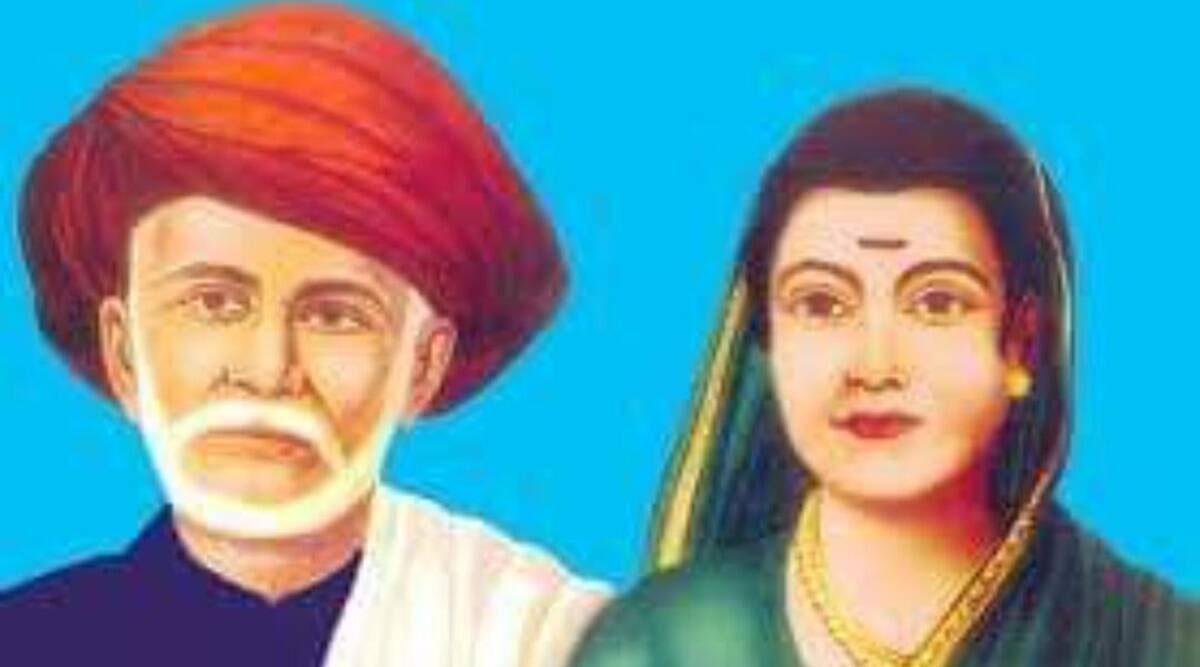Indian History
Savitribai and Jyotirao Phule
- 08 Mar 2022
- 6 min read
For Prelims: Savitribai and Jyotirao Phule, Dr. B.R. Ambedkar, Mahatma Gandhi, Satyashodhak Samaj (The Truth-Seeker’s Society).
For Mains: Legacy of Savitribai and Jyotirao Phule, caste- and gender-based discrimination.
Why in News?
Recently, Maharashtra Governor was criticised for allegedly mocking 19th century social reformers Savitribai and Jyotirao Phule for “getting married at a young age”.
- Mahatma Jyotirao and Savitribai Phule stand out as an extraordinary couple in the social and educational history of India.
- They spearheaded path-breaking work towards female education and empowerment, and towards ending caste- and gender-based discrimination.
Who were Savitribai and Jyotirao Phule?
- In 1840, at a time when child marriages were common, Savitri at the age of ten was married to Jyotirao, who was thirteen years old at the time.
- The couple later in life strove to oppose child marriage and also organised widow remarriages.
- Jyotirao Phule:
- He was an Indian social activist, thinker, anti-caste social reformer and writer from Maharashtra.
- He is also known as Jyotiba Phule.
- Education: In 1841, Phule was enrolled at the Scottish Missionary High School (Pune), where he completed education.
- Ideology: His Ideology was based on: Liberty, Egalitarianism, Socialism.
- Phule was influenced by Thomas Paine’s book titled The Rights of Man and believed that the only solution to combat the social evils was the enlightenment of women and members of the lower castes.
- Major Publications: Tritiya Ratna (1855), Powada: Chatrapati Shivajiraje Bhosle Yancha (1869), Gulamgiri (1873), Shetkarayacha Aasud (1881).
- Title of Mahatma: He was bestowed with the title of Mahatma on 11th May, 1888 by a Maharashtrian social activist Vithalrao Krishnaji Vandekar.
- Social Reforms: Jyotirao, the revolutionary that he was, observed the lack of opportunities for education for young girls and women.
- He started to educate his wife at home and trained her to become a teacher.
- He realised the pathetic conditions of widows and established an ashram for young widows and eventually became an advocate of the idea of Widow Remarriage.
- He attacked the orthodox Brahmins and other upper castes and termed them as "hypocrites".
- In 1868, Jyotirao constructed a common bathing tank outside his house to exhibit his embracing attitude towards all human beings and wished to dine with everyone, regardless of their caste.
- He started awareness campaigns that ultimately inspired the likes of Dr. B.R. Ambedkar and Mahatma Gandhi, stalwarts who undertook major initiatives against caste discrimination later.
- It is believed by many that it was Phule who first used the term ‘Dalit’ for the depiction of oppressed masses often placed outside the ‘varna system’.
- He was an Indian social activist, thinker, anti-caste social reformer and writer from Maharashtra.
- Savitribai Phule:
- In 1852, Savitribai started the Mahila Seva Mandal to raise awareness about women’s rights.
- Savitribai called for a women’s gathering where members from all castes were welcome and everybody was expected to sit on the same mattress.
- She published Kavya Phule in 1854 and Bavan Kashi Subodh Ratnakar in 1892.
- In her poem, Go, Get Education, she urges the oppressed communities to get an education and break free from the chains of oppression.
- She simultaneously campaigned against child marriage, while supporting widow remarriage.
- She initiated the first Satyashodhak marriage—a marriage without a dowry, Brahmin priests or Brahminical rituals in 1873.
What is their Legacy?
- Together, by 1848, the Phules started a school for girls, Shudras and Ati-Shudras in Poona.
- In the 1850s, the Phule couple initiated two educational trusts—the Native Female School, Pune and The Society for Promoting the Education of Mahars, Mangs and Etceteras—which came to have many schools under them.
- In 1853, they opened a care centre for pregnant widows to have safe deliveries and to end the practice of infanticide owing to social norms.
- The Balhatya Pratibandhak Griha (Home for the Prevention of Infanticide) started in their own house.
- The Satyashodhak Samaj (The Truth-Seeker’s Society) was established on 24th September, 1873 by Jyotirao-Savitribai and other like-minded people.
- The Samaj advocated for social changes that went against prevalent traditions, including economical weddings, inter-caste marriages, eradication of child marriages, and widow remarriage.
- Also, Satya shodhak samaj was founded with a purpose to give education to the lower castes, scheduled caste, scheduled tribes and made them aware of the exploiting tradition of society.
PYQ
Satya Shodhak Samaj organized (2016)
(a) a movement for upliftment of tribals in Bihar
(b) a temple-entry movement in Gujarat
(c) an anti-caste movement in Maharashtra
(d) a peasant movement in Punjab
Ans: (c)







